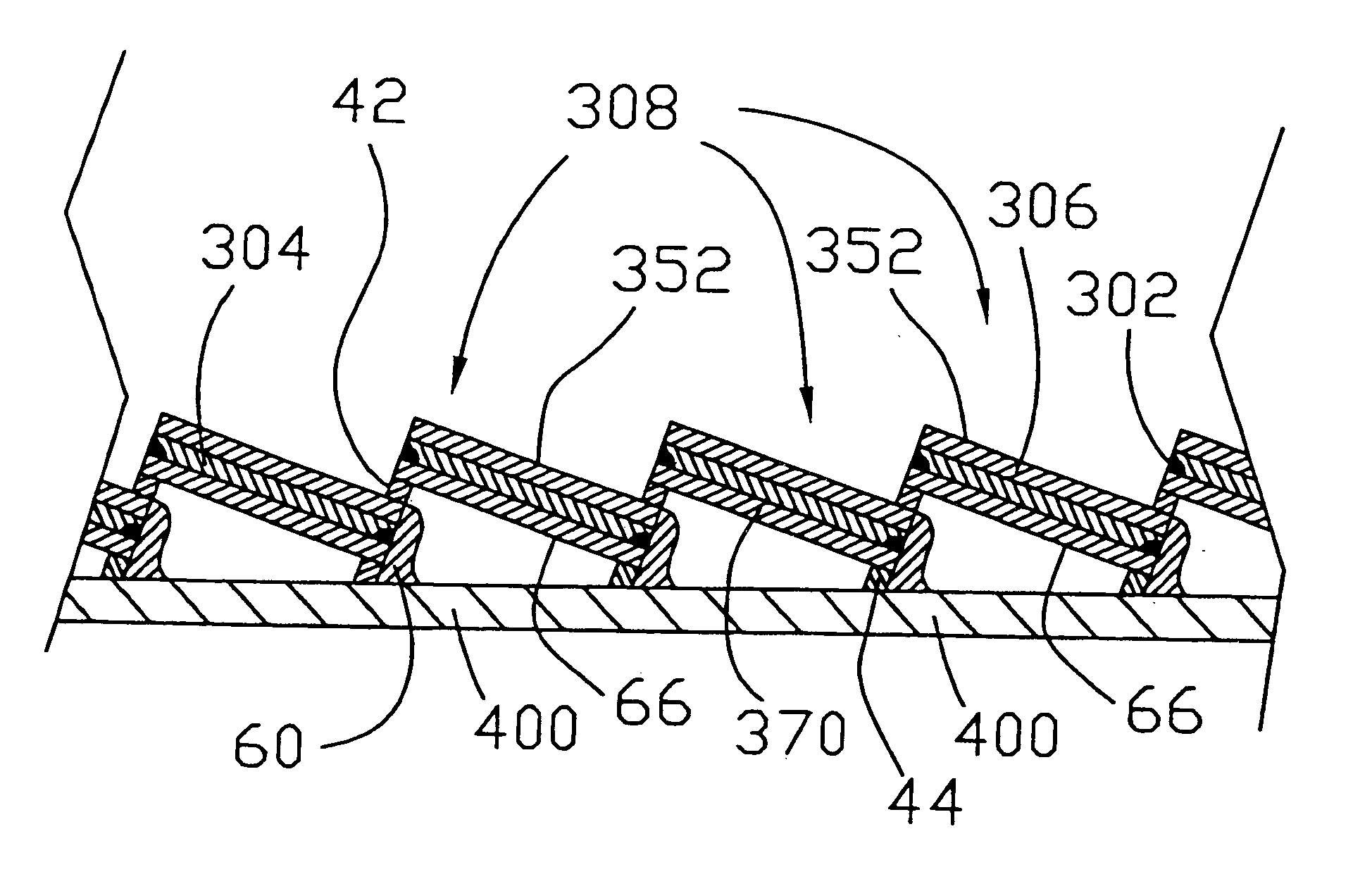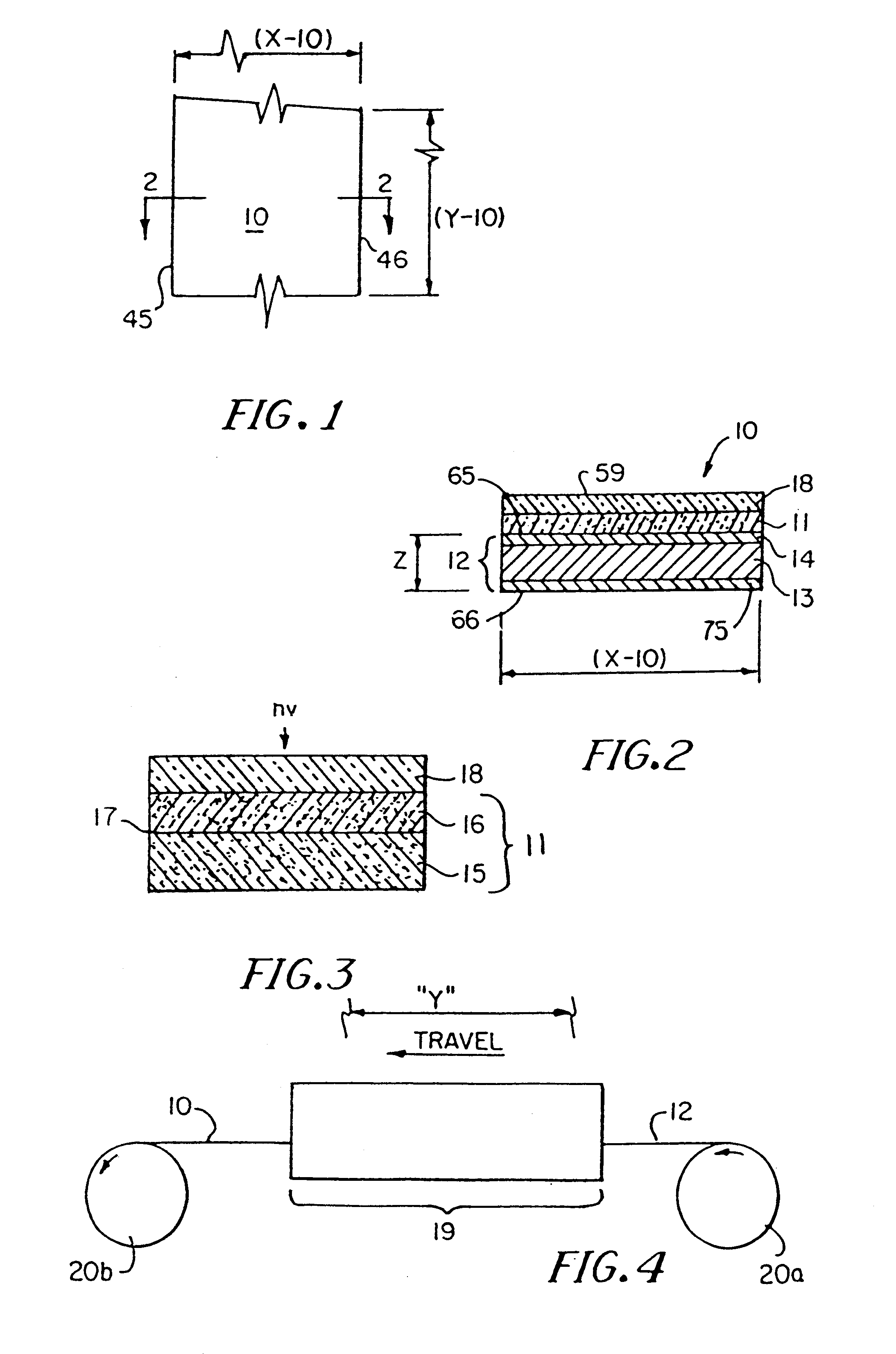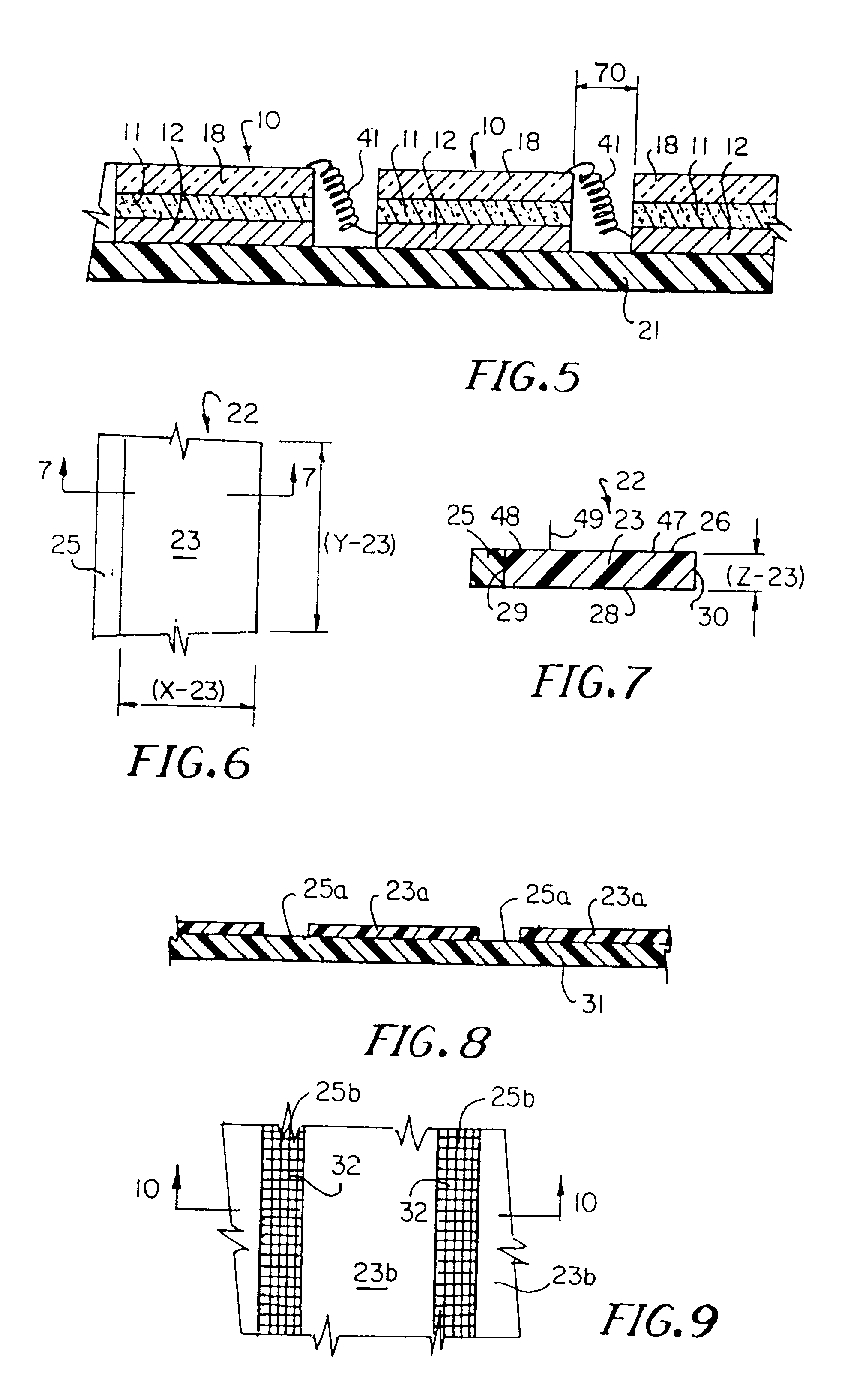Substrate and collector grid structures for integrated series connected photovoltaic arrays and process of manufacture of such arrays
a photovoltaic array and collector technology, applied in the direction of pv power plants, cell components, radiation control devices, etc., can solve the problems of high cost of single crystal silicon material and interconnection processing, thwarting wide-scale energy collection using single-crystal silicon cells, and difficult and expensive long-term series connection among multiple small cells, etc., to achieve low cost, eliminate deficiencies, and high efficiency
- Summary
- Abstract
- Description
- Claims
- Application Information
AI Technical Summary
Benefits of technology
Problems solved by technology
Method used
Image
Examples
Embodiment Construction
Reference will now be made in detail to the preferred embodiments of the invention, examples of which are illustrated in the accompanying drawings. In the drawings, like reference numerals designate identical or corresponding parts throughout several views and an additional letter designation is characteristic of a particular embodiment.
Referring to FIGS. 1 and 2, a thin film photovoltaic cell is generally indicated by numeral 10. Cell 10 has a light-incident top surface 59 and a bottom surface 66. Structure 10 has a width X-10 and length Y-10. Width X-10 defines a first photovoltaic cell terminal edge 45 and second photovoltaic cell terminal edge 46. It is contemplated that length Y-10 is considerably greater than width X-10 and length Y-10 can generally be described as "continuous" or being able to be processed in a roll-to-roll fashion. FIG. 2 shows that cell 10 comprises a thin film semiconductor structure 11 supported by metal-based foil 12. Foil 12 has first surface 65, second...
PUM
 Login to View More
Login to View More Abstract
Description
Claims
Application Information
 Login to View More
Login to View More - R&D
- Intellectual Property
- Life Sciences
- Materials
- Tech Scout
- Unparalleled Data Quality
- Higher Quality Content
- 60% Fewer Hallucinations
Browse by: Latest US Patents, China's latest patents, Technical Efficacy Thesaurus, Application Domain, Technology Topic, Popular Technical Reports.
© 2025 PatSnap. All rights reserved.Legal|Privacy policy|Modern Slavery Act Transparency Statement|Sitemap|About US| Contact US: help@patsnap.com



